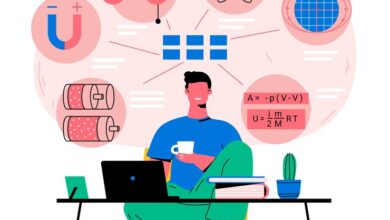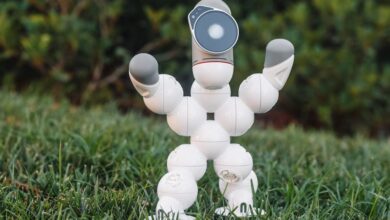How to Create a Code-Free ChatGPT Clone?

Unlock the secrets of making a code-free ChatGPT clone with our comprehensive manual. Explore step-by-step commands, innovative platforms, and user-pleasant tools that allow you to harness the strength of AI-driven communique without the need for complex coding. Dive into the future of chatbot creation comfortably, the use of ChatGPT’s have an impact on as thought in your personal code-unfastened AI chat experience.
Most of us have used ChatGPT at some point and are familiar with its fundamentals. Just in case, ChatGPT is an AI-driven chatbot that creates conversations that seem human by utilizing deep learning and natural language processing (NLP). In addition to writing words, the chatbot may generate ideas, respond to queries, and perform other tasks.
Without writing a single line of code, we’ll take you step-by-step through the process of creating an AI chatbot in this post. It’s true that Github is not required, nor is Javascript or Python. To create a ChatGPT clone with all the essential features, all you need is a Microsoft Azure account and Bubble’s visual web editor. This includes a chat function, a history of your “conversation,” and an artificial intelligence-powered backend that speaks back to you using natural language processing.
Assemble the equipment you’ll need to replicate ChatGPT.
- Firstly, you must register for a free Bubble account if you haven’t already. To get started and follow along as we develop this web application together, click the button below.
- Open a free Bubble account.
- Using the Microsoft Azure OpenAI Service Chatbot Template, we will get this project started. For submitting requests (messages) to the chatbot, this Bubble template includes an input box, a submit button, and a repeating group for displaying the chatbot’s answers. Additionally, a scrollable history of your discussion is displayed by the recurring group:
- Install the chatbot template for Microsoft Azure OpenAI Service.
- First, make sure your Bubble account has the free template added to it. Next, locate the template in your account’s Templates section, click Launch an app. Make sure you select Azure OpenAI Service Chatbot as the default template in the dialog box that pops up. Click Start and give your new Bubble app a name.
- Once your app is loaded, adjust its name, font, colour, and favicon by following the instructions under Get Started on the right foot. When you reach step 4, don’t add any more plugins to your app and keep it basic for the time being.
- Design mode will load for your Bubble app. To exit both the component library and the Build a landing page box, click the X.
The template ought to now be loaded into your application:
Pre-filled instructions for building the chatbot (which you will remove at the end and which we will go over in detail shortly) are located in the upper part of the template. The on-page components that the app really uses are located in the lower section.
Alright, so you’re prepared to deploy a model as soon as you have the template open and an Azure account with access to OpenAI Services.
Employ Azure OpenAI Service to deploy a sizable language model.
Go to https://portal.azure.com in a new tab or window of your browser, then sign in to your account. For those who have previously deployed a model and configured Azure OpenAI Service, go to the next stage to link the model and template.
If not, you will have to use Azure OpenAI Service to set up and set up a GPT deployment. Microsoft provides a comprehensive guide to assist you with the procedure.
You may link your model to your Bubble app once it has been published.
Set up the template so that it connects to your LLM.
This template’s and the Azure OpenAI Service Plugin’s attractiveness is that it eliminates the need to manually create an API connection between the two services. Rather, all you need to do to link your Bubble app to your OpenAI model is copy and paste the necessary data from your Azure account into the appropriate areas of your Bubble app.
This is how you do it:
- Click the Search resources, services, and documentation (G+/) search box from within your Azure account.
- Enter “openai.”
- Select Azure OpenAI.
- Decide the resource to employ in conjunction with the plugin. This is the model that you previously deployed; it should be identifiable by its name.
- Select Endpoint and Keys.
- Select Key 1 and click the Copy to Clipboard option.
- Open the plugin settings in your Bubble app, switch to the developer version, and paste the key into the text boxes labelled “api-key (shared headers)” and “api-key (shared headers)”.Return to the Azure OpenAI Service Keys and Endpoints page after step
- Select the Endpoint and click the Copy to Clipboard button.
- Go to your Bubble app and copy and paste the endpoint into the text fields labelled “endpoint (path)” and “endpoint (path) – dev.”
- Select Model Deployments by returning to the Azure OpenAI Service tab.
- To access Azure OpenAI Studio, click the Manage Deployments icon.
- If required, choose the subscription and directory, followed by the resource that was utilized in the earlier stages. Next, select the Management group’s Deployments option.
- Transfer the deployment name to the clipboard.
Turn on your Bubble app and copy the deployment name into the text fields labelled deployment-id (path) and deployment-id (path) – dev.
- And that’s all! To watch your app in action, click Preview.
- Customize the appearance and feel with Bubble’s user-friendly design tools.
- Take a look at your new chatbot! To understand how the plugin functions with the web application and communicates with the APIs, have a look at the workflows.
Congratulations! You’ve successfully made an uncode ChatGPT clone!
Develop further functionalities
After setting up your rudimentary chatbot, take some time to experiment and be imaginative with the user interface you create. Here are some concepts to think about:
Include the option to save chatbot talks in a searchable library.
In Bubble’s workflow tab, customize chatbot prompts to target certain activities and situations.
Create features that align with the use case that your chatbot is designed to serve. For instance, if the chatbot is meant to assist users with writing, you may tailor the experience by creating predefined chat personalities like coach, comedian, or translator.
Modify the user’s experience as they wait for the chatbot to respond. For instance, you might display an hourglass-shaped loading state indication. Alternatively, you may provide streaming so that the user can follow along while the chatbot “types.”
Increase security and privacy
Remember to start establishing privacy policies and guidelines to protect the data of your users. Start with roles under the Privacy area of your data tab. Using an API checker, you may also determine whether you’re inadvertently disclosing any data.
Beginning / Launch
When the time comes to debut, you’ll need to subscribe to a premium Bubble plan, which costs $29 per month. These let you host your software on a custom domain of your choosing, enable external people to utilize it, and much more. Don’t worry, you can include all of ChatGPT’s above capabilities into your app without paying extra for any further plugins that you may have incorporated.
Conclusion to Code-Free ChatGPT Clone:
In the end, the adventure to create a code-loose ChatGPT clone opens new possibilities for AI lovers and creators. By embracing accessible tools and structures, people can convey AI-pushed conversations to existence without the need for intricate coding. As the era keeps evolving, the democratization of AI turns into a reality, enabling a broader target market to engage with and contribute to the exciting realm of code-free chatbot creation. Empower your innovative endeavours and embark on a adventure in which innovation knows no coding boundaries.



